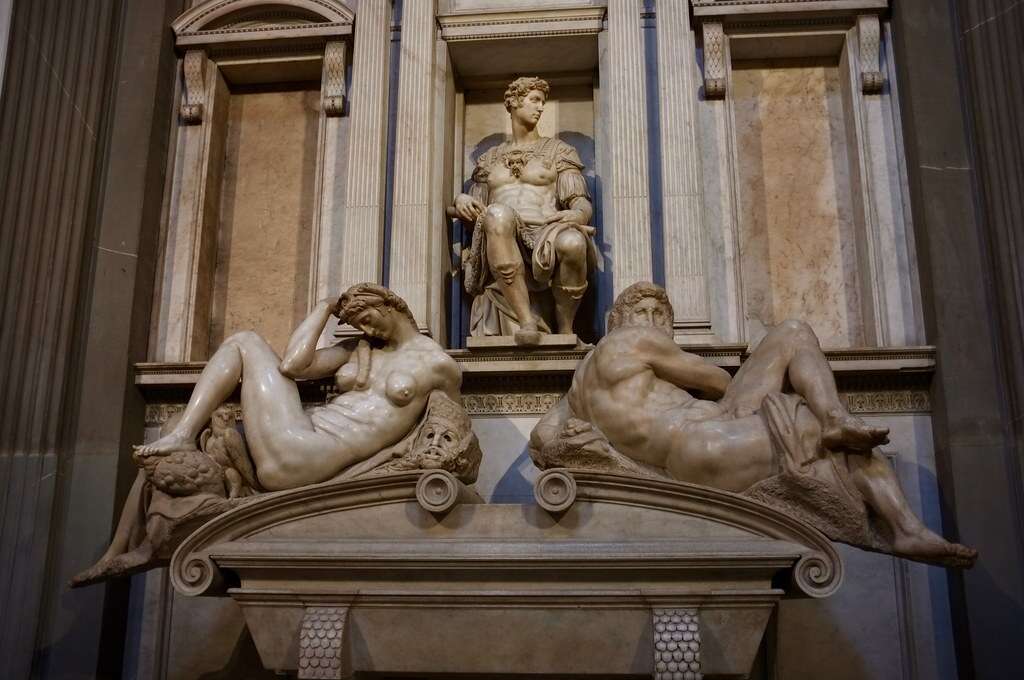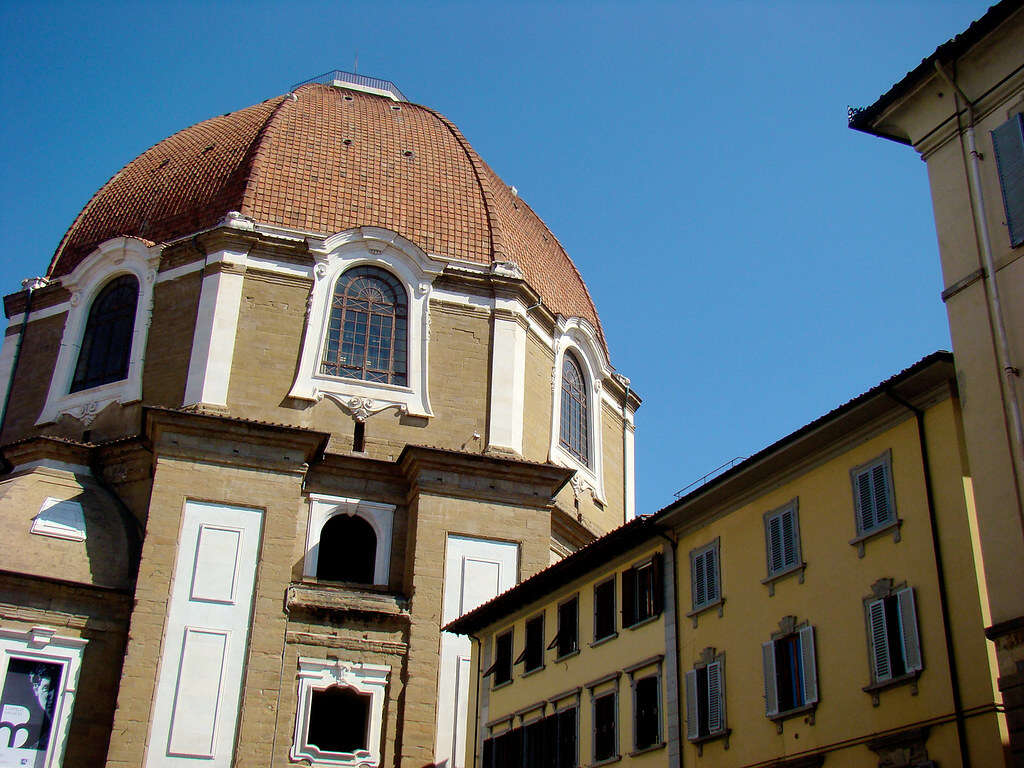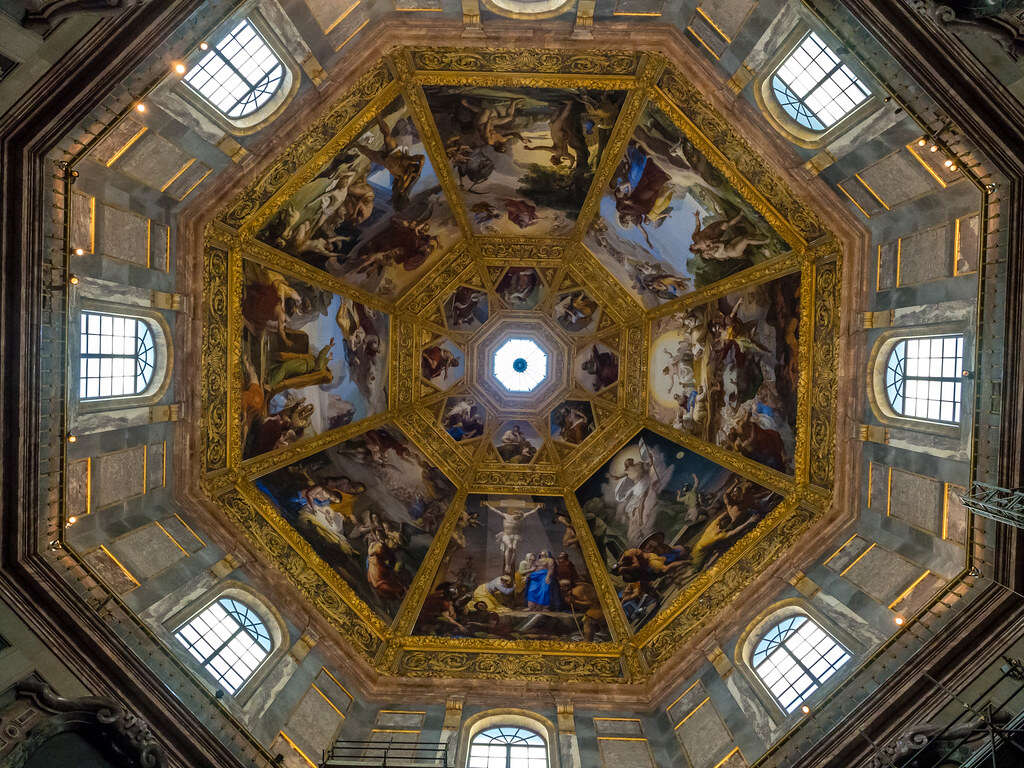Cappelle Medicee
The Cappelle Medicee, also known as the Medici Chapels, are two structures at the Basilica of San Lorenzo. They were built as extensions to Brunelleschi's 15th-century church in order to accommodate the large Medici family, the powerful Florentine dynasty whose members include several popes, five queens and other political and religious figures.
Italian bourgeois family
The Medici family, also known as the House of Medici, first attained wealth and political power in Florence in the 13th century through its success in commerce and banking. The Medici Bank was one of the most prosperous and respected institutions in Europe, and there are some estimates that it may have been the largest bank in Europe during much of the 15th century. There are some estimates that the Medici family was the wealthiest family in Europe for a period of time. Beginning in 1434 with the rise to power of Cosimo de' Medici, the family's support of the arts and humanities made Florence into a cultural center of Italy.
Sagrestia Nuova
In the Cappelle Medicee, the Medici family's monumental mausoleum, you can admire frescoes by Michelangelo and his students, as well as tombs sculpted by the greatest Florentine artists. Michelangelo designed the New Sacristy in 1520 in order to create a private mausoleum for the Medici family. It was intended by Michelangelo to be the final resting place of two of the Medici family, Lorenzo il Magnifico and his brother Giuliano. The tombs are situated within niches in the walls. These were said to be Michelangelo's final works.
Cappella dei Principi
The octagonal Cappella dei Principi is adorned by a tall dome, which is the distinguishing feature of San Lorenzo when seen from a distance. Cappella was created by Matteo Nigetti in 1602-1604 to house the tombs of members of the Medici family or their spouses. A true expression of court art, it was the result of collaboration among designers and patrons.













